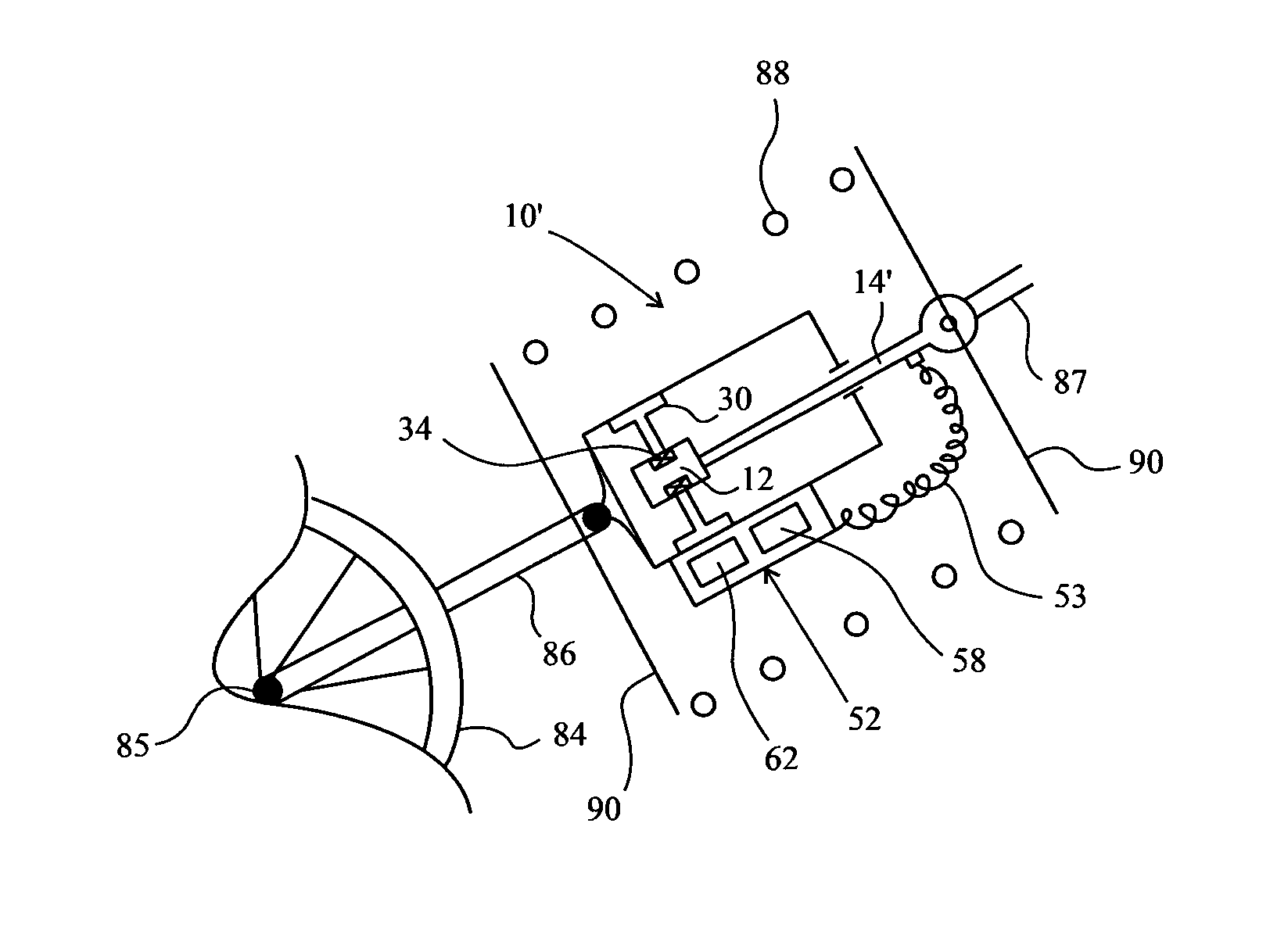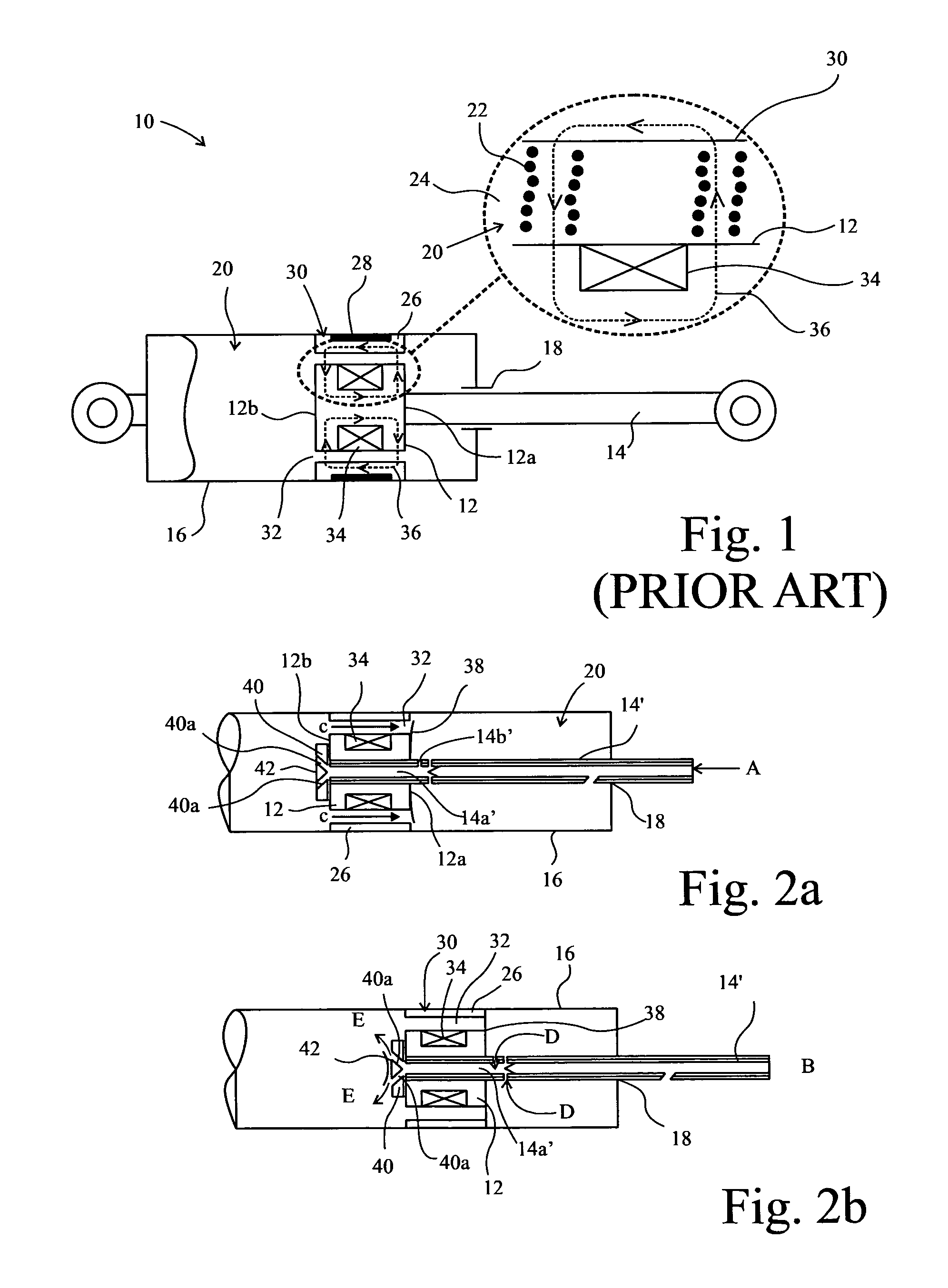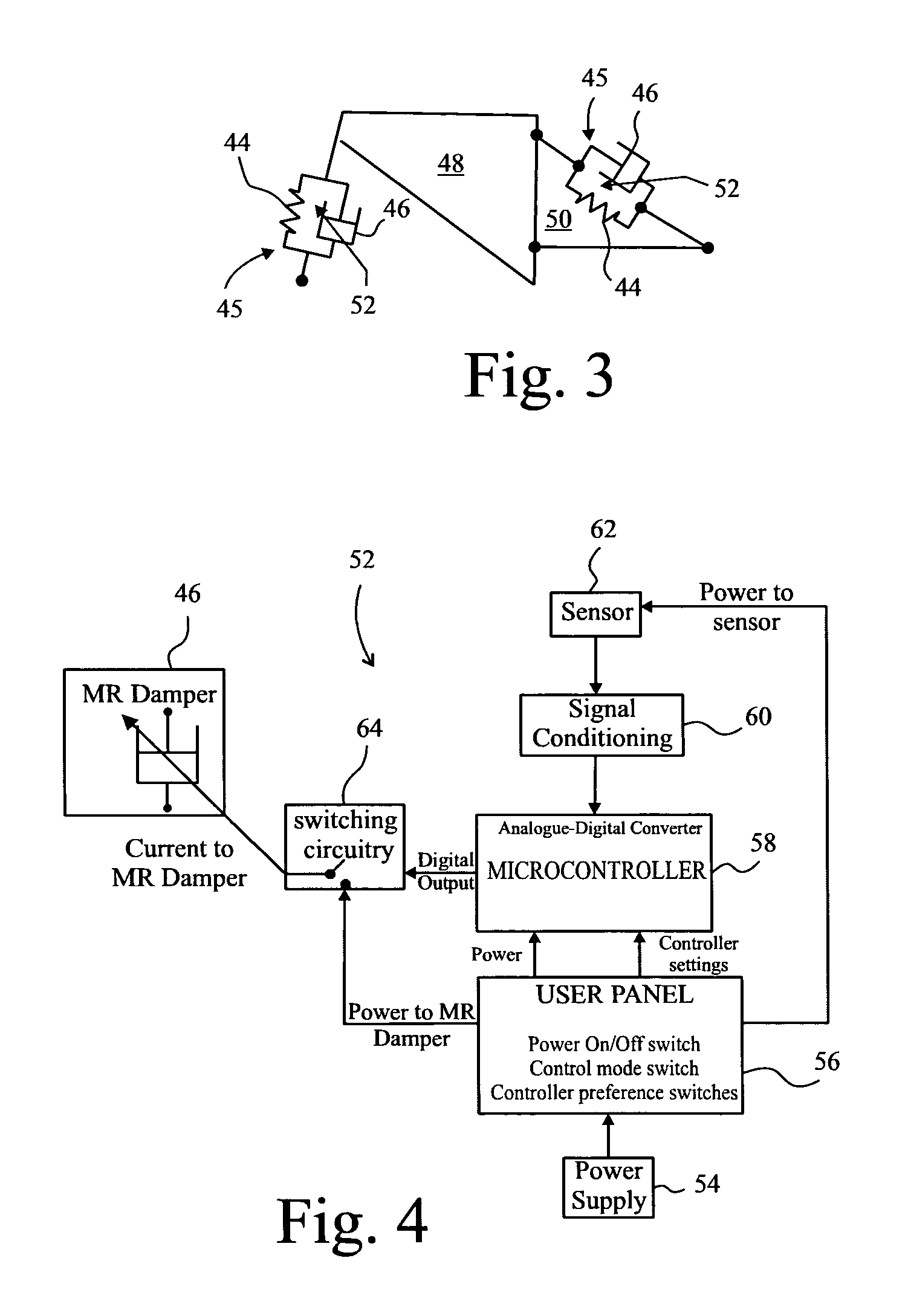Dampers for mountain bikes
a technology for mountain bikes and hammers, applied in the direction of shock absorbers, cycle equipment, cycles, etc., can solve the problems of poor handling, suspension of ‘packing down, and period of zero wheel contact for
- Summary
- Abstract
- Description
- Claims
- Application Information
AI Technical Summary
Benefits of technology
Problems solved by technology
Method used
Image
Examples
Embodiment Construction
[0065]FIG. 1 shows a typical magnetorheological (MR) damper 10 forming part of the prior art. The damper 10 comprises a bobbin 12 attached at one end of a shaft 14. The bobbin 12 is disposed within a chamber 16 containing MR fluid 20. The MR fluid consists of a suspension of micron-sized ferromagnetic particles 22 (see FIG. 1 insert) distributed in a carrier liquid 24.
[0066]The shaft 14 extends from within the chamber 16 through an opening 18 that comprises a seal. The seal ensures that the chamber 16 remains fluid tight whilst allowing the shaft 14 and bobbin 12 to slidably move along a direction parallel the length of the shaft 14. The bobbin has a proximal end 12a proximal the opening 18 and a distal end 12b, distal the opening 18.
[0067]The bobbin 12 is connected to and circumscribed by a bobbin ring 30 such that the bobbin ring 30 moves collectively with the bobbin within the chamber 12. The bobbin ring 30 is attached to the bobbin 12 by connectors (not shown) and spaced apart f...
PUM
 Login to View More
Login to View More Abstract
Description
Claims
Application Information
 Login to View More
Login to View More - R&D
- Intellectual Property
- Life Sciences
- Materials
- Tech Scout
- Unparalleled Data Quality
- Higher Quality Content
- 60% Fewer Hallucinations
Browse by: Latest US Patents, China's latest patents, Technical Efficacy Thesaurus, Application Domain, Technology Topic, Popular Technical Reports.
© 2025 PatSnap. All rights reserved.Legal|Privacy policy|Modern Slavery Act Transparency Statement|Sitemap|About US| Contact US: help@patsnap.com



